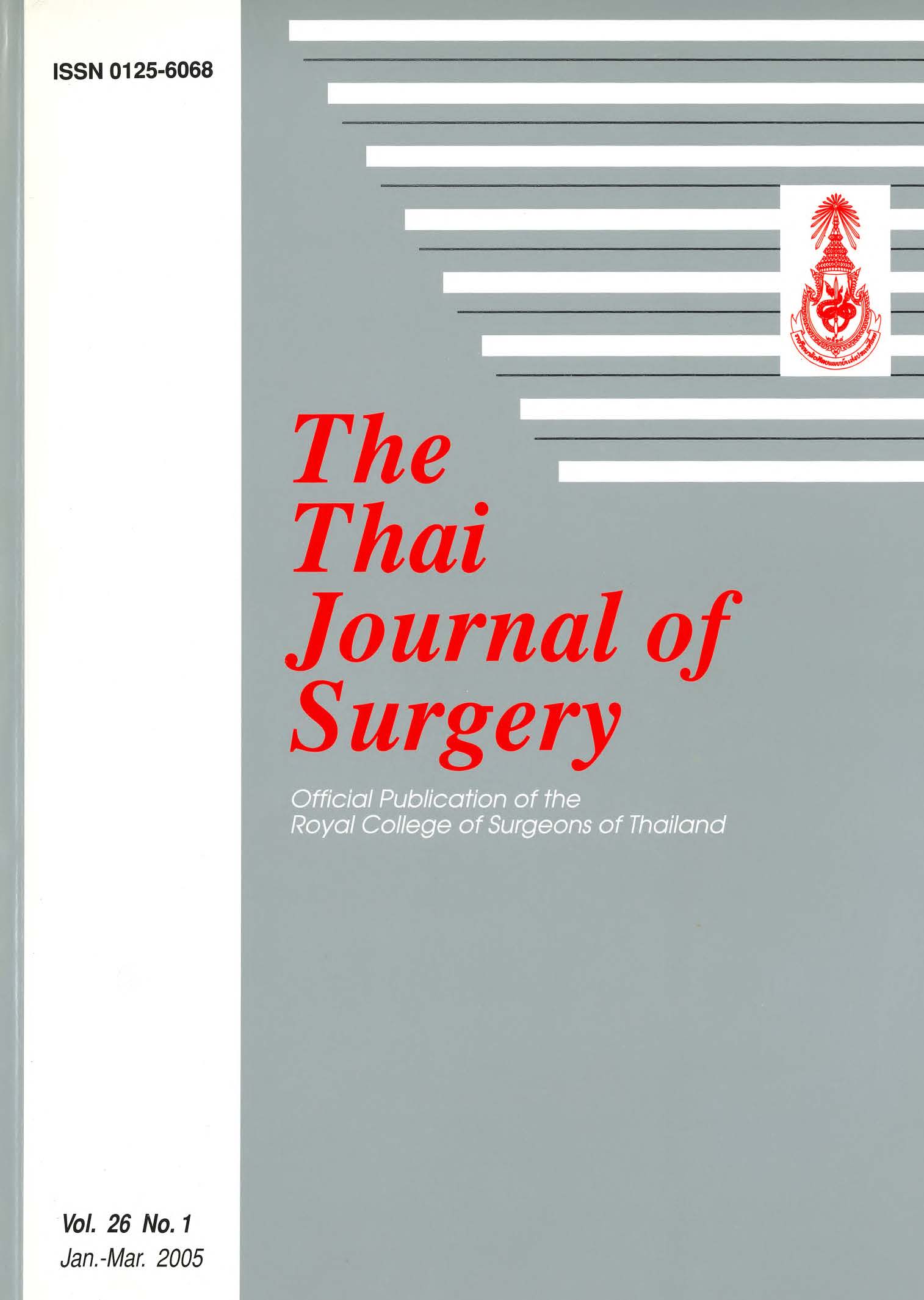Vacuum-assisted Closure: A Reliable Method to Secure Skin Graft
Abstract
Background: The success of skin grafting procedure requires many factors and the most important ones are avoidance of fluid collection under the graft and immobilization to prevent shearing force between the graft itself and the recipient bed. Blood, serum, and purulent material collection under the graft will separate the skin graft from its wound bed, prevent vascularization, and thus cause loss of the graft.
Objectives: To determine the effectiveness of the application of a vacuum-assisted closure (VAC) over the skin graft to obtain a secure skin graft immobilization and to prevent fluid collection under the graft.
Materials and Methods: Prospective studies of VAC were done on 17 wounds of 14 consecutive patients, ages ranged from 2 to 74 years. A local made collapsible foam was sterilized and used to cover the wound and a non-collapsible nasogastric tube was used for suction of the air from the wound. The other end of the nasogastric tube was connected to the wall suction pump that provided 100-125 mmHg of continuous negative pressure, for a period of 4-7 days, without external immobilization with cast or K-wire fixation. The wound was observed for another two weeks after the VAC dressing had been removed.
Results: Ninety to 100% of graft take was observed in all wounds in the first week and 100% of the wound completely healed in the third week.
Conclusions: The technique of VAC with the skin grafting procedure is a simple and reliable method to secure the skin graft on the wound bed and to prevent fluid collection under the graft.
References
2. Teh BT. Why do skin grafts fail? Plast Reconstr Surg 1979: 63:323-32.
3. Flowers RS. Unexpected postoperative problems in skin grating. Surg Clin North Am 1970; 50: 439-56.
4. Argenta LC, Morykwas MJ. Vacuum-assisted closure; a new method of wound control and treatment; clinical experience. Ann Plast Surg 1997: 38: 563-72.
5. Morykwas MJ, Argenta LC, Skelton-Brown El, Mcguirt W. Vacuum-assisted closure; a new method of wound control and treatment; animal studies and basic foundation. Ann Plast Surg 1997; 38: 553 -62.
6. Blackburn II JH, Boemi L, Hall WW, et al. Negative-pressure dressing as a bolster for skin grafts. Ann Plast Surg 1998; 40:453-7.
7. Schneider AM, Morykwas MJ, Argenta LC. A new and reliable method of securing skin grafts to the difficult recipient bed Plast Reconstr Surg 1998; 102: 1195-8.
8. Meara JG, Guo L, Smith JF, et al. Vacuum-assisted closure in the treatment of degloving injuries, Ann Plast Surg 1999;42:589-94.
9. Molnar JA, Defranzo AJ, Marks MW. Single-stage approach to skin grafting the exposed skull. Plast Reconstr Surg 2000;10;174 -7.
Downloads
Published
How to Cite
Issue
Section
License
Articles must be contributed solely to The Thai Journal of Surgery and when published become the property of the Royal College of Surgeons of Thailand. The Royal College of Surgeons of Thailand reserves copyright on all published materials and such materials may not be reproduced in any form without the written permission.



